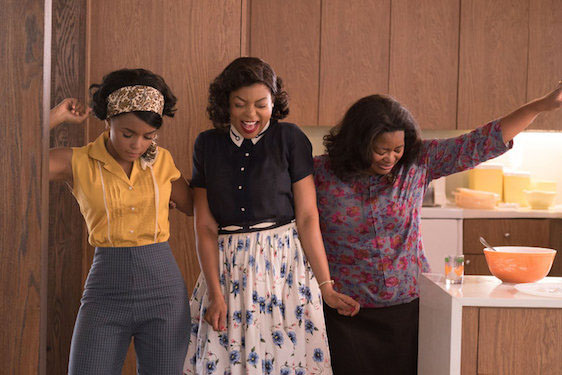By Colin Covert
Star Tribune (Minneapolis)
WWR Article Summary (tl;dr) Adapted from Margot Lee Shetterly’s nonfiction bestseller, “Hidden Figures” is a rare glimpse at black women making crucial contributions to the U.S. space program in the early 1960s.
Star Tribune (Minneapolis)
There’s no requirement for a movie to be unique or groundbreaking in order to succeed. “Hidden Figures” tells a singular story in textbook fashion, creating a conventional, feel-good, part-fictional history lesson that would fit in any high school.
Adapted from Margot Lee Shetterly’s nonfiction bestseller, this is a rare glimpse at black women making crucial contributions to the U.S. space program in the early 1960s. It is filmmaking as mainstream as meatloaf. And there’s nothing wrong with that.
Director Theodore Melfi made his sentimental drama formulaic and pleasurable in hopes that general audiences would eat it up.
The film offers an excellent ensemble cast giving wonderful performances. Leading ladies Taraji P. Henson, Octavia Spencer and Janelle Monae are pure awards-bait. They give interesting performances as Katherine Johnson (Henson), Dorothy Vaughan (Spencer) and Mary Jackson (Monae), outstanding but historically ignored math and physics wizards at Virginia’s Langley Memorial Aeronautical Laboratory.
Their pre-IBM contributions as “human computers” for NASA were essential to the program’s success. With slide rules, pencils and adding machines, they were personally responsible for putting John Glenn in orbit in 1962, navigating the ship, and bringing him safely back to Earth.
The film’s greatest asset may be Kevin Costner. He’s excellent as a composite character, doing the non-actorish work he does best. He keeps his craft authentic, naturalistic and all but invisible as a fair-minded NASA engineering boss who respects technical talent and detests any Jim Crow prejudice that could trip up his section’s role in the space race. The group chemistry is charming and inspirational.
The setting is a time when the Soviet Union was outperforming the United States in sending satellites and rockets into orbit, winning global prestige and worrying many Americans about the military implications of successful Russian launches. At that point, our long-range rockets had an embarrassing tendency to topple over on the launchpad or explode like fireworks shortly after takeoff. It was not our proudest hour.
Nor was America propelling itself swiftly toward interracial unity. People pushing for civil rights were widely viewed as agitators, and seeking progress was commonly considered wanting too much too fast. The film’s scientific savants received minimal praise and rewards, facing entrenched prejudice while a number of white men far less qualified were hired at relatively high status and salaries.
The filmmakers find effective ways to make the fight for civil rights part of each character’s story. As the only African-American in an office filled with white men, Johnson is compelled to brew her own coffee in a pot marked “colored” rather than drink from the one the others share. Because there is no bathroom available for her in the building, she wastes precious work time crossing the vast grounds to the building where her black colleagues work. And when her efforts produce vital reports, she’s noted at best as a co-author.
Moments of prejudice reach outside the workplace. Vaughan is thrown out of a public library for researching outside of the “colored” section. Jackson has to go before a judge and argue against laws permitting racial segregation in order to take a white school’s night classes. Johnson, a widow with three children, meets a warm suitor in Army Col. Jim Johnson (Mahershala Ali), who has his own biases about the role of women. It’s not cruel or even intentional. It’s just the way things are, until people learn to see beyond them.
The characters struggle not just to find a place in science careers, but in society.
It’s hard to believe that the three women would be the sort of chatty close friends you’d find in a sitcom, or that an administrator like Costner’s character would swing a crowbar against a costly signboard signifying prejudice that offends him.
But despite its minor flaws, “Hidden Figures” provides an uplifting view of a difficult period.
___
‘HIDDEN FIGURES’
3 out of 4 stars
Rating: PG for thematic elements and some language.














































































































































































































































































































































































